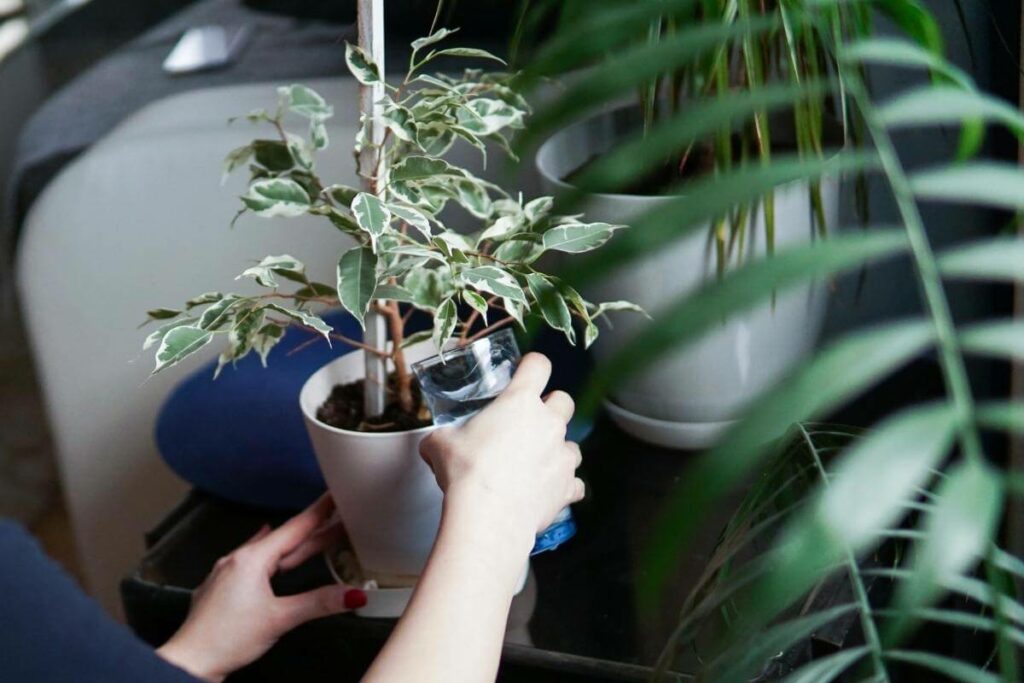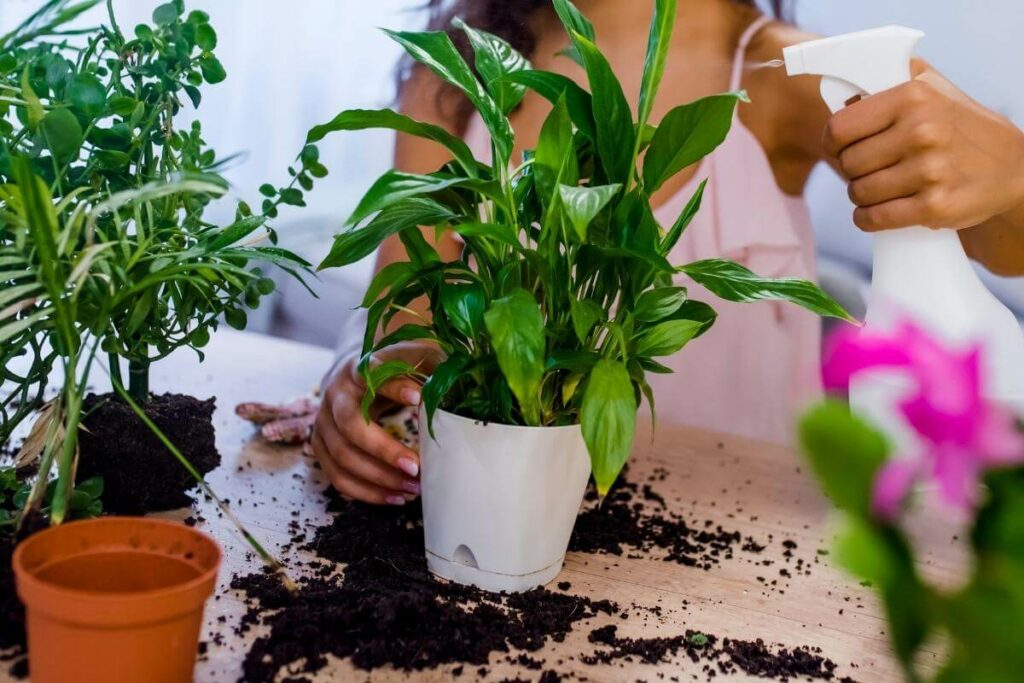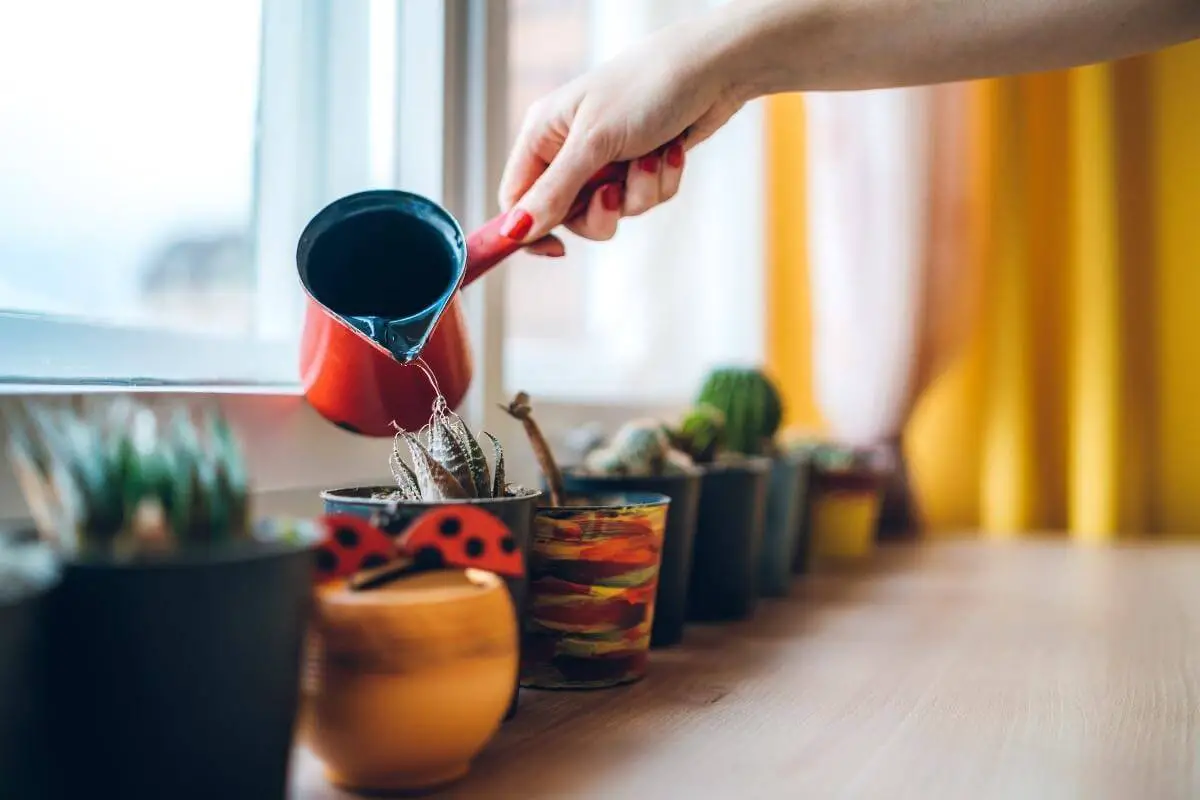Have you ever gone to water your plants, but the water just sits on top of the soil?
Chances are your soil has become hydrophobic, meaning it is repelling water.
Do you want to learn how to fix hydrophobic soil in your home?
Fixing hydrophobic soil requires a little more care than just adding water. When water becomes hydrophobic, the bonds between the soil molecules become tighter and won’t let water in as easily, so you’ll need to help your soil relax.
Why Does Soil Become Hydrophobic?
No, hydrophobic soil doesn’t mean that the soil is afraid of water.
It means that the soil is repelling water instead of absorbing it.

When bacteria and fungus in the soil break down and decompose, it leaves a waxy coating on the soil particles.
The bacteria and fungus start to die when the soil has been sitting dry for too long.
Your plants can still be hydrophobic even with regular watering. You were probably told to water your plants until the water leaks out the bottom drainage holes, which is great advice.
If your plants are hydrophobic, that water is most likely running down the side of the pot, straight through the bottom, and your plant isn’t getting any of it.
Your soil can also become hydrophobic if you’re working with peat.
Have You Noticed: Peat is added into soil mixtures to retain water, and that way plants have a water reserve when the soil starts to dry. If the peat in your soil dries out, it becomes difficult to rehydrate.
How to Fix Hydrophobic Soil
So how do you fix it?
There are a few things you can do to try to turn your hydrophobic soil into hydrophilic soil.

Bottom Soaking
If your pot has drainage holes, and you can move it easily, this is a great place to start:
- Put the pot in a larger container, and add water into the container until it’s about halfway up the side of the pot.
- Allow your plant to sit in this water for 5-10 minutes.
If the soil at the top of the pot hasn’t gotten any darker, allow it to sit for another 10 minutes.
If the top layer of soil still isn’t getting any moisture, it is time to move on to the next step.
Aerate the Soil
With a fork, skewer, or chopstick, carefully add holes deep into the soil.
Be careful not to damage the roots!
This is going to break up the soil a little bit to give the water more surface area to be absorbed into.
With multiple aeration holes in the soil, the water can be absorbed more evenly.
When your plant has mostly dried, go back to step one and try bottom soaking your plant now that it has been aerated.
Wetting Agents
If a good soak and assistance from aeration don’t improve your soil, it is time to try wetting agents.
Wetting agents work by lowering the surface tension of the soil, allowing water to permeate the soil more easily. In simpler terms; the bonds between soil particles become a little looser to allow water in.
You might already have something at home to make a wetting agent with without even knowing it. Dish soap diluted in water makes a great wetting agent.
All you need to do is stir ¼ teaspoon into a gallon of lukewarm water, and pour the water over the entire surface of the soil. Make sure you cover every area at the top.
If you don’t feel like a DIY project, you can buy wetting agents to use on your plants.
Alternative: If none of these work, it might be time to repot your plant in new soil. Try a soil that has wetting agents already mixed in, or contains perlite to help retain moisture.
How Prevent Hydrophobic Soil
The good news in all of this is you can prevent your soil from becoming hydrophobic in the first place.

The main cause for it is the soil drying out, so a regular watering schedule is essential. This doesn’t mean water your plants every day; you might drown them!
Instead, check the moisture level with your finger or a toothpick about an inch into the soil. If it’s still damp, you’re okay, but if it’s starting to feel dry it’s time to water.
If you keep your soil dampened to your plant’s preference, you’ll keep the bacteria and fungus in the soil healthy.
Since they have the moisture they need to thrive, they won’t break down as easily, and they won’t coat your soil in the waxy substance.
You can also buy higher-quality soil that already has wetting agents mixed in. This is good for plants that like to dry out a little bit before their next watering.
So the next time they’re watered, the wetting agents will prevent your soil from being hydrophobic.
Using fertilizers can also help prevent your soil from being hydrophobic:
- The fertilizers add tons of nutrition to the soil that the plant feeds off of, but the bacteria in the soil also feed on it.
- Research how often to fertilize your plant, and only use the recommended amount.
Often, during the winter months, your plants won’t need any fertilizer.
Final Thoughts
If your roommate didn’t water your plants at all during your vacation, you might need to fire them and get a better plant-sitter.
Letting your plant’s soil dry out too much between waterings can cause the soil to become hydrophobic, and it won’t absorb the water properly.
Sure, hydrophobic soil is an easy enough problem to fix, but why go through the hassle of fixing something that can be prevented?
Goo-quality, moisture-retaining soil, and a regular watering schedule will leave your soil healthy and your plants will thank you for it.
Related Articles
- Do You Water Aloe Vera Plants from Top or Bottom?
- How Often to Water Outdoor Cactus?
- How Much Water Does A Venus Flytrap Need?
